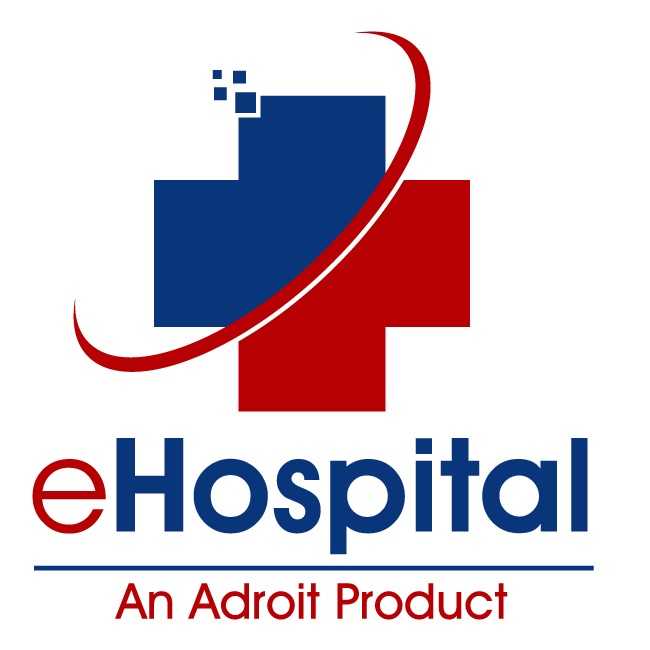Description

eHospital

Pathosys Software
Comprehensive Overview: eHospital vs Pathosys Software
eHospital and Pathosys are both types of health information systems designed to facilitate and improve hospital and laboratory management, respectively. They serve distinct purposes within the healthcare landscape, though there might be some overlap depending on the specific deployment within healthcare facilities. Here’s a comprehensive overview:
a) Primary Functions and Target Markets
eHospital:
Primary Functions:
- Hospital Management: Streamlines administrative functions such as patient registration, appointment scheduling, billing, and discharge processes.
- Clinical Management: Facilitates electronic medical records (EMR), order entry, and clinical decision support for healthcare providers.
- Inventory Management: Manages pharmaceutical and other medical supplies, ensuring proper inventory control.
- Lab and Radiology Management: Manages lab tests and radiology imaging tracking and reporting.
- Financial Management: Integrates pricing models, insurance claims processing, and financial reporting.
- Reporting and Analytics: Provides comprehensive reporting tools for hospital management to make data-driven decisions.
Target Markets:
- Medium to large-sized hospitals and healthcare organizations looking to digitize and streamline operations.
- Healthcare facilities looking to improve coordination and patient care efficiency.
Pathosys:
Primary Functions:
- Laboratory Information Management: Handles sample tracking, test scheduling, and result management within medical laboratories.
- Pathology Reporting: Assists in the generation of pathology reports, integrating seamlessly with laboratory instruments for data transfer.
- Quality Assurance: Ensures that all laboratory processes comply with regulatory standards and quality control measures.
- Inventory Management: Manages laboratory supplies and reagents stock levels.
Target Markets:
- Pathology labs and diagnostic centers seeking efficient lab operations management.
- Hospitals with distinct pathology departments needing specialized laboratory solutions.
b) Market Share and User Base
The market share and user base of eHospital versus Pathosys can vary significantly due to their different target applications:
-
eHospital typically has a larger market share within the broader healthcare sector due to its scope covering multiple facets of hospital management. It is likely to have a more extensive user base, proportional to the size and number of hospitals adopting comprehensive hospital management systems.
-
Pathosys caters to a more specialized niche within the medical software sector, focusing on pathology labs. Its market share is thus smaller than that of eHospital, but it is widely adopted by laboratories and diagnostic centers requiring in-depth laboratory information systems.
c) Key Differentiating Factors
-
Scope of Functionality:
- eHospital offers a broad array of functionalities covering multiple aspects of hospital operations, from administration to clinical management, making it suitable for whole facility management.
- Pathosys specializes in specific laboratory and pathology processes, providing detailed capabilities for those focused areas and ensuring high accuracy and efficiency.
-
Target Audience:
- eHospital targets hospitals and large healthcare facilities, providing them with a holistic solution to integrate disparate operations into a single system.
- Pathosys focuses on pathology laboratories, providing a concentrated set of tools tailored for lab-specific needs.
-
Integration:
- eHospital may provide broader integration capabilities with various hospital departments, linking multiple facets of hospital systems.
- Pathosys typically focuses on integrating with laboratory equipment and processes, supporting accurate and efficient lab operations.
-
Regulatory Compliance:
- Both systems need to comply with healthcare regulations, but the specific regulations may differ due to the varying focus—comprehensive hospital management versus specialized laboratory operations.
In conclusion, both eHospital and Pathosys are critical health software solutions with distinct functions, target markets, and differentiating factors. Their adoption would largely depend on the specific needs and size of the healthcare facility or laboratory.
Contact Info

Year founded :
Not Available
Not Available
Not Available
India
http://www.linkedin.com/company/ehospital

Year founded :
Not Available
Not Available
Not Available
Not Available
Not Available
Feature Similarity Breakdown: eHospital, Pathosys Software
To provide a feature similarity breakdown for eHospital and Pathosys Software, we'll analyze the core features, user interface comparisons, and any unique attributes each product may have. Please note that the specifics might vary based on the latest updates or custom implementations of these software solutions.
a) Core Features in Common
Both eHospital and Pathosys Software are designed to facilitate healthcare management and operations. Here are some core features they likely share:
-
Patient Management: Both systems offer modules for managing patient information, medical history, and visit records.
-
Appointment Scheduling: Each provides tools for scheduling, rescheduling, and managing patient appointments efficiently.
-
Electronic Medical Records (EMR): Capabilities to create, store, and manage digital medical records.
-
Billing and Invoicing: Integrated billing systems for handling patient invoices, insurance claims, and financial transactions.
-
Reporting and Analytics: Tools for extracting insights and generating reports based on various healthcare data points.
-
Inventory Management: Features to track and manage medical supplies and inventory.
-
User and Role Management: Admin capabilities to manage user roles and ensure data privacy and security.
b) User Interface Comparison
While I don't have visual data to compare the software interfaces directly, general observations based on industry standards and typical software design can be made:
-
eHospital:
- Typically, eHospital software tends to focus on a clean and structured layout, with an emphasis on accessibility for all hospital departments.
- User-friendly dashboards that consolidate essential functions are often a highlight, along with responsive design for various devices.
-
Pathosys Software:
- Pathosys may offer a more streamlined interface tailored to pathology and lab management, often featuring rapid access to test results and sample tracking.
- The UI might emphasize functionality specific to lab operations and quick navigation between patient records and test analytics.
c) Unique Features
-
eHospital Unique Features:
- Often includes broader features like telemedicine integration and broader hospital management functions, such as HR modules and outpatient management.
- May offer a comprehensive approach suitable for large healthcare facilities covering various departments.
-
Pathosys Software Unique Features:
- Focused more on pathology labs, with robust capabilities in automating and managing laboratory workflows, such as sample tracking and result interpretation.
- Advanced lab equipment integration for real-time data processing might be a unique offer.
It's important for organizations to conduct demos and trials for each software to assess how well they meet specific needs and requirements within their healthcare settings. Customization and integration capabilities can also significantly impact how these systems perform in different environments.
Features

Patient Management
Communication Tools
Electronic Health Records (EHR)
Billing and Payments

Patient Management
Billing and Financial Management
Data Security and Privacy
Clinical Documentation
Best Fit Use Cases: eHospital, Pathosys Software
eHospital and Pathosys Software are specialized solutions designed for different needs in the healthcare sector. Here's how each one fits specific use cases:
a) eHospital
Best Fit Use Cases:
- Hospitals and Multi-Specialty Clinics: eHospital is ideal for large healthcare facilities that require an integrated Hospital Management Information System (HMIS) to streamline operations. This includes managing patient information, billing, appointment scheduling, and electronic medical records (EMR).
- Healthcare Networks and Chains: Organizations with multiple healthcare facilities can benefit from eHospital's centralized management capabilities, allowing for uniform processes across locations.
- Government Healthcare Projects: eHospital may be suitable for public healthcare projects that need efficient record-keeping and patient management to improve service delivery on a large scale.
- Educational Institutions with Medical Facilities: Universities or colleges with healthcare services can use eHospital to manage their medical operations, ensuring both administrative efficiency and compliance with healthcare regulations.
b) Pathosys Software
Preferred Scenarios:
- Laboratories and Diagnostic Centers: Pathosys Software is tailored for pathology and diagnostics, offering features that manage laboratory workflows, test result processing, and reporting efficiently. It is ideal for standalone labs as well as those within larger hospital environments.
- Specialized Pathology Departments: Hospitals with advanced or specialized pathology departments can utilize Pathosys Software to handle complex diagnostic tasks and data management needs.
- Research Facilities: Institutions engaged in medical research that require precise and detailed laboratory data management can benefit from Pathosys, which offers support for detailed analytics and reporting.
d) Industry Verticals and Company Sizes
-
eHospital:
- Industry Verticals: Primarily targets the healthcare industry including hospitals, clinics, and government health sectors.
- Company Sizes: Suitable for medium to large-sized healthcare providers due to its comprehensive features that support diverse healthcare requirements.
-
Pathosys Software:
- Industry Verticals: Specifically targets the pathology and diagnostic sector within the healthcare industry.
- Company Sizes: Can serve both small independent labs and larger hospital-affiliated diagnostic centers, thanks to its focus on laboratory processes and analytics.
These products cater to different needs within the healthcare industry, with eHospital focusing on overarching hospital management and Pathosys honing in on laboratory and diagnostic service efficiency.
Pricing

Pricing Not Available

Pricing Not Available
Metrics History
Metrics History
Comparing teamSize across companies
Conclusion & Final Verdict: eHospital vs Pathosys Software
In evaluating eHospital and Pathosys Software, it is essential to consider various factors, such as functionality, ease of use, cost-effectiveness, scalability, and support services. Here is a comprehensive conclusion and final verdict on these healthcare management systems:
a) Best Overall Value:
Determining which product offers the best overall value depends on the specific needs of the healthcare institution. However, if a general assessment is made:
- eHospital: Generally provides comprehensive modules that cater to a wide range of hospital management needs. It’s often praised for its robust features and customizability.
- Pathosys Software: Appears to be especially well-suited for laboratories and diagnostic centers, often with a focus on pathology-specific functionalities.
Considering these aspects, eHospital may offer better overall value for large hospitals or multi-specialty clinics needing a broad range of functionalities across various departments. Pathosys Software may provide better value for laboratories and pathology centers that require specialized tools focused on their specific operational needs.
b) Pros and Cons:
eHospital:
Pros:
- Comprehensive suite of modules covering hospital operations from patient registration to billing and discharge.
- Flexible and can be customized to fit various departmental needs.
- Scalable for both small clinics and larger hospitals.
Cons:
- It may require a steeper learning curve due to its extensive features.
- Potentially higher initial investment depending on the specific configurations and customizations required.
Pathosys Software:
Pros:
- Tailored for pathology and laboratory management, making it highly specialized for diagnostic facilities.
- Typically integrates well with lab equipment, facilitating efficient workflow.
- Can offer more streamlined processes for laboratory-specific tasks such as handling test results and managing samples.
Cons:
- Less suitable for general hospital management beyond the pathology department.
- May lack some of the broader hospital management features found in software like eHospital.
c) Recommendations:
-
For General Hospitals and Multi-Specialty Clinics:
- Consider eHospital if you need a comprehensive system that can manage the full spectrum of hospital operations. Its extensive feature set will likely provide the flexibility needed for such diverse environments.
-
For Pathology Labs and Diagnostic Centers:
- Pathosys Software may be the preferable choice if your primary focus is on managing laboratory operations efficiently. Its specialization in pathology makes it a strong candidate for such facilities.
-
Hybrid Environments:
- For hospitals with significant in-house pathological laboratories, it might be worthwhile to explore integrations between eHospital and Pathosys Software, allowing both general and specialized functionalities to coexist efficiently.
-
Decision Process:
- Assess the scale and specific needs of your institution, consider the budget, and conduct trials or demos if possible to see the software in action.
- Evaluate the implementation and training support provided by each vendor to ensure a smooth transition.
Ultimately, the choice between eHospital and Pathosys Software should align with the specific operational needs and strategic goals of your healthcare organization.
Add to compare
Add similar companies



